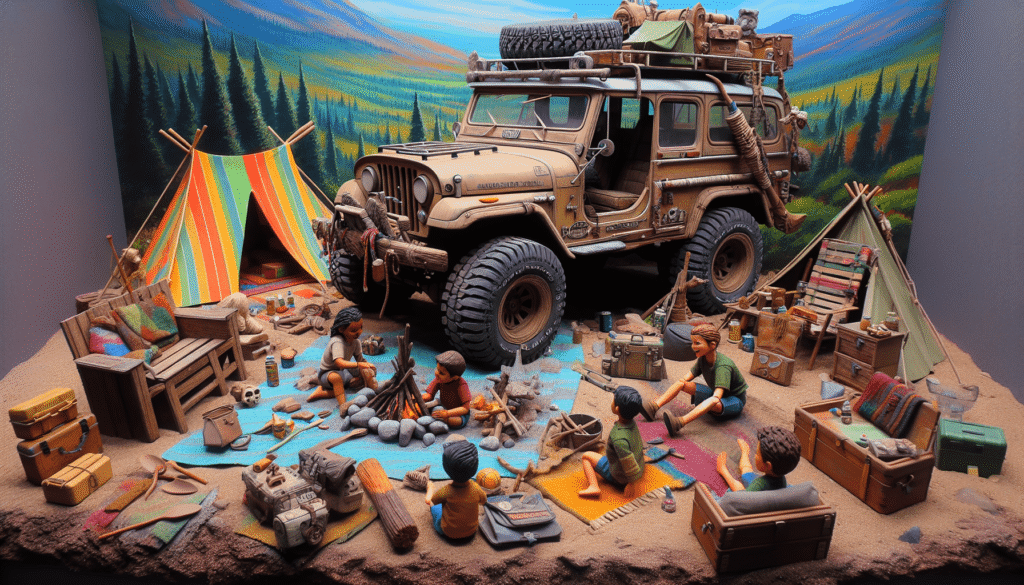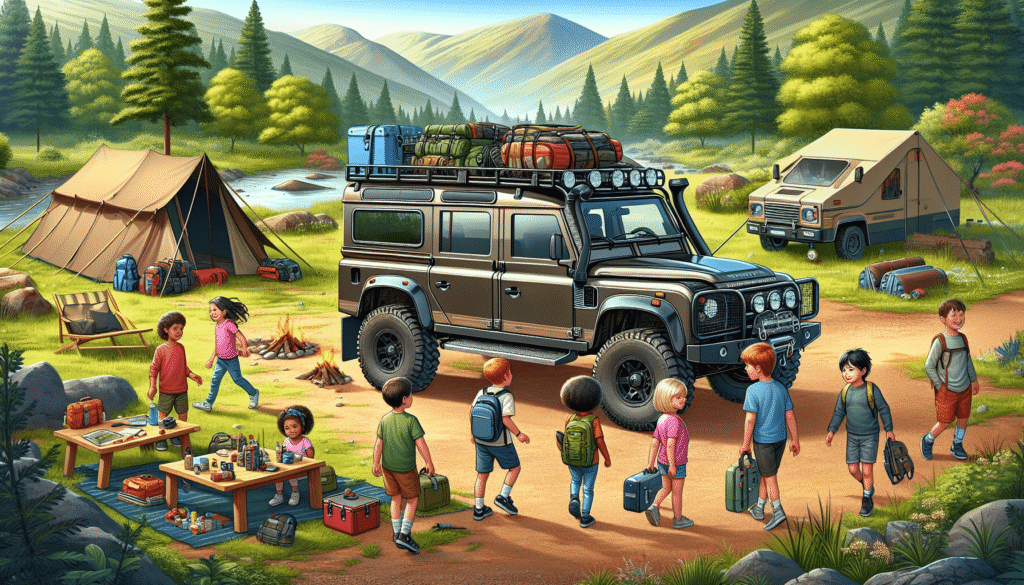Have you ever thought about taking your kids on an overlanding adventure? Picture this: you packed up your vehicle, loaded your family, and set off to explore the great outdoors together. It may sound daunting at first, especially when considering the unique challenges of traveling with children. In 2025, there are several best practices to help ensure your family’s safety, enjoyment, and memorable experiences while overlanding. Let’s journey through these best practices.
Understanding Overlanding
Overlanding is not just a form of camping; it’s an expedition that relies on self-sufficiency and a spirit of adventure. Generally, it involves traveling long distances on rugged roads in your vehicle. It’s about immersing yourself in nature, embracing the unknown, and creating lasting memories with your loved ones.
Why Overlanding with Children?
Traveling with your children can be one of the most fulfilling experiences you can share. It exposes them to nature, enhances their problem-solving skills, and teaches vital life lessons. Overlanding allows you to bond through shared experiences, encouraging curiosity and resilience.
Planning Your Overlanding Trip
It can be tempting to jump straight into the vehicle, but proper planning is crucial. Good preparation can mean the difference between an enjoyable adventure and one filled with stress.
Choosing the Right Destination
The first step in planning is selecting a family-friendly destination. Research locations that offer child-friendly activities, safe campgrounds, and interesting sights.
| Factors to Consider | Description |
|---|---|
| Distance from Home | Choose a location that isn’t too far to minimize travel fatigue. |
| Terrain and Climate | Consider your children’s comfort; avoid extreme terrains or temperatures. |
| Safety and Emergency Services | Ensure the area has access to hospitals or emergency services if needed. |
Timing Your Trip
Timing can significantly impact your experience. School holidays or long weekends might be perfect for you, but consider the weather conditions of your chosen destination. Off-peak times often mean fewer crowds, allowing your family to enjoy famous spots without the chaos.

Essentials for Overlanding with Children
Packing the right gear is crucial for a successful adventure. You’ll want to ensure comfort, safety, and entertainment for the little ones.
Vehicle Preparation
Before you hit the road, ensure your vehicle is in top condition. A breakdown in the wilderness can be particularly frightening for children.
- Routine Maintenance: Check your oil, tires, brakes, and fluids. Make sure your vehicle’s spare tire and tools are readily accessible.
- Child Safety Seats: Ensure that your children’s seats are securely fastened and appropriate for their age and size.
Packing List for the Family
Creating a comprehensive packing list can ease the stress of preparation. Here’s a basic idea of what to include:
| Category | Items to Bring |
|---|---|
| Clothing | Weather-appropriate clothes, extra layers, rain gear |
| Sleeping Gear | Sleeping bags, portable cribs, or mats |
| Food and Cooking Supplies | Non-perishable snacks, cooking gear, utensils |
| First-Aid Kit | Band-aids, antiseptics, and any medications needed |
| Entertainment | Books, games, and digital devices for downtime |
Comfort on the Road
Long stretches in the vehicle can lead to fidgeting and boredom. Plan for comfortable seating with enough legroom.
- Snacks: Keep plenty of snacks within reach. Healthy options can keep their energy levels up.
- Rest Stops: Schedule regular stops for bathroom breaks, leg stretching, and fun exploration.
Safety Considerations
Your children’s safety should always be a top priority while overlanding. Understanding your surroundings and being prepared for emergencies can provide peace of mind.
Establishing Rules
Once you’re on the road or settled at your campsite, establish rules to ensure your children understand their boundaries. This helps them feel secure while allowing them to explore.
- Dangerous Areas: Identify areas that are off-limits, such as water bodies or rocky ledges.
- Safe Play Zones: Designate specific areas for play to keep a close eye on your children.
Emergency Preparedness
It’s crucial to be equipped for emergencies.
- Plan for Accidents: Inform your children about what to do in case someone gets lost or in trouble.
- Emergency Contacts: Have a list of important contacts, including family members and local emergency numbers, saved on your phone.

Engaging Your Children in the Experience
To get the most out of your overlanding experience, engage your children in the process. This incorporates learning and fun, making the adventure even more memorable.
Learning Opportunities
Overlanding provides unique chances for education about nature, wildlife, and survival skills.
- Nature Journals: Give your children journals to document what they see, including leaves, animals, and landscapes.
- Star Gazing: Teach them about constellations and planets when camping at night.
Participating in Tasks
Invite your children to assist with age-appropriate tasks. They’ll love feeling helpful and responsible.
- Setting Up Camp: Let them help set up tents or arrange the campsite.
- Cooking: Involve them in meal preparation to teach them about cooking and food safety.
Emphasizing Flexibility
Even with the best plans, overlanding often involves unexpected changes. Being flexible can transform potential stress into opportunity.
Adjusting Plans
It’s essential to remain open to after-the-fact alterations. You may encounter bad weather or less-than-ideal road conditions.
- Alternate Activities: If a planned hike is rained out, have backup indoor activities ready, like crafts or games.
- Extended Stays: If you find a place your family loves, don’t hesitate to linger an extra day or two.
Enhancing the Overlanding Experience
To make the adventure even more enjoyable, think about what small touches can enhance the experience.
Creative Campsite Activities
- Campfire Stories: Share engaging stories or legends around the fire; it’s a wonderful way to connect.
- Stargazing Nights: Use a stargazing app to identify constellations and make the night magical.
Taking Photos
Capture your family moments through photography. Create opportunities for future storytelling by taking candid shots of your travels.
- Photo Challenges: Encourage your kids to take pictures of specific items like wildlife, plants, or unique rock formations.
Post-Trip Reflections
Once the adventure winds down, take time to reflect on the experience with your kids. Discussing what you all enjoyed can nurture their love for exploration and adventure.
Creating a Scrapbook
Encourage your kids to piece together a scrapbook using photos, maps, and their journal entries. This allows them to revisit their exciting memories regularly.
Family Discussions
Have open discussions about what worked, what didn’t, and how they felt about the trip. This feedback can inform future journeys, making each one better than the last.
Final Thoughts
Overlanding with children can be one of the most rewarding adventures you will embark on as a family in 2025. By considering safety, engaging them in the process, and embracing flexibility, you can transform potential challenges into unforgettable memories. As you venture out into nature’s welcoming arms, you’re not just traveling; you’re building bonds, instilling values, and creating stories that will last a lifetime. It’s a beautiful journey, and you’re already on your way by planning ahead for your family’s next great adventure!

